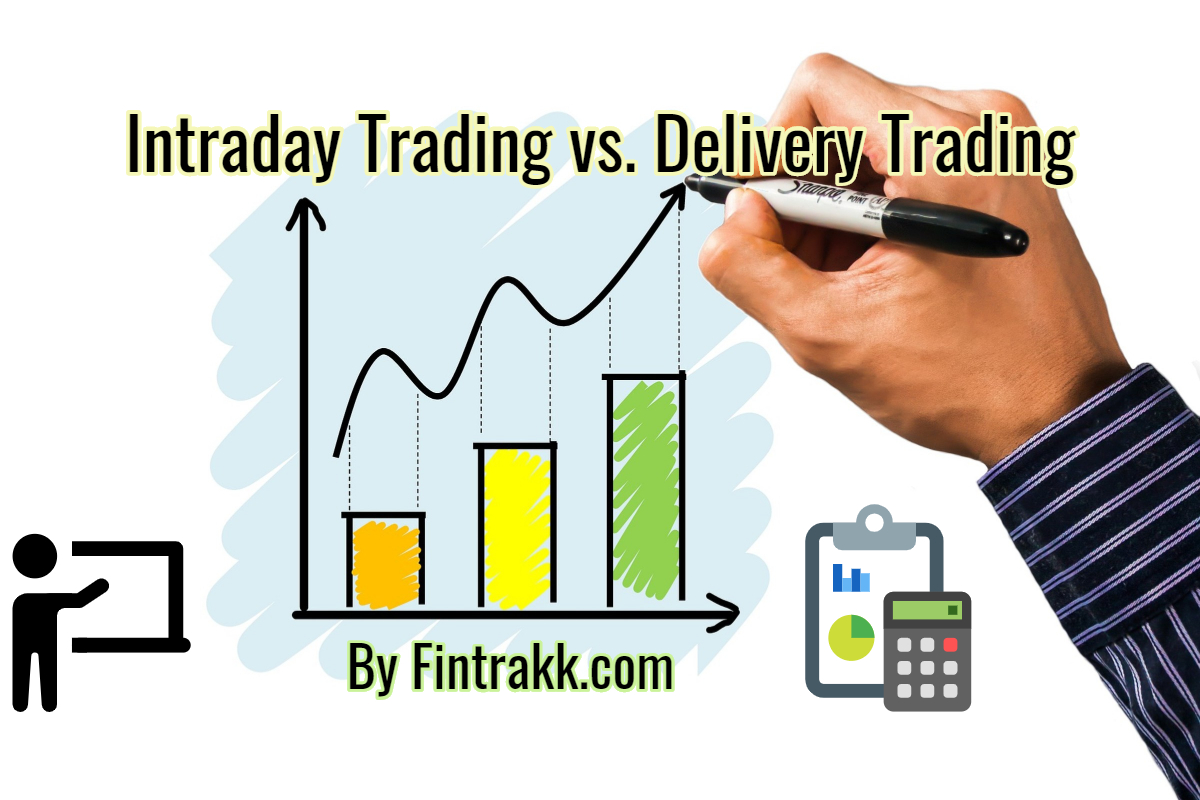Have you heard of “Intraday Trading” and “Delivery Trading”? These are the two popular terms used in Stock trading. Let’s catch up some exclusive details and know the difference Intraday Trading vs. Delivery Trading.
In a fast moving era as of now; not everyone has the time and patience to hold anything for a longer period in anticipation of higher value or growth.
Let’s take a simple example of lemonade; if we borrow or buy lemons today to make lemonade then we can say the drink was made today. It might not be the best day to relish the same, however we still went ahead and sipped it all away. On the other hand, if we buy lemons today but keep it for a sunny day, which can be a day or two later, then the enjoyment or satisfaction of the beverage might be higher as against the killing heat.
Intraday Trading vs. Delivery Trading: An Overview
In the world of the stock market, there is a give and take happening every second, but the only difference is people buy or sell stocks. Say, for instance, a trader plans to make a delivery trade, it means he or she decides to be part-owner of the company. In this exercise, they offer money for the specific value of the stock and the broker makes the purchase on their behalf from the stock exchange. The stock is bought and delivered to the retail investor electronically in their Demat account.
Back in the day, retail investors would physically visit the stock rooms at the exchange and bet on live price changes and receive the stock in the paper. Hence, the term delivery trading came into existence as the retail investor could physically carry them away.
While Intraday trading involves, borrowing stocks from the exchange either through funds in your account or leverage from the broker at a certain cost. The retail trader doesn’t own the stocks and thus doesn’t get delivery on it. He or she is only using the stock within the day to make the best trade possible to maximize one’s profit.
Trading Approach
When it comes to approach, traders tend to utilize fundamental analysis to make delivery trade as it involves full payment. And, what is important to understand is that the individual can’t sell the stock on the same day of the purchase as it will be considered intraday. They end up in the Demat account as “holdings”. Its progress can be analyzed over a period without having to sell it. In a way, we wait for the right sunny day to enjoy our lemonade!
Further, the trader also receives the right to attend investors’ meetings, receive voting rights when the company allows on various issues related to its growth. With intraday, traders take the plunge based on a certain hunch or technical analysis, mostly on stocks which are highly fluctuating on a certain day. They track every moment, follow the news, trader communities to understand the right time to get off the stock. They try to create value out of nothing and are supposed to dispose of the stock before the stock exchange closes. In conclusion, traders pick the right approach on a given day or for a stock depending on the economy and how they perceive growth in their portfolio.
Thus, it won’t be wrong to say, an intraday trade today could be a delivery tomorrow if the trader envisions a strong upsurge!!
Disclaimer: There is a high degree of risk involved in stock trading. The details given on this website are for informational purpose only and cannot be constituted as professional advice in any regard. Please follow due diligence while investing your money.
Which trading technique do you like to follow and why? Intraday Trading vs. Delivery Trading difference is one of the stock market basics you must learn before entering the robust stock arena. Don’t you think so? Feel free to share your thoughts.

